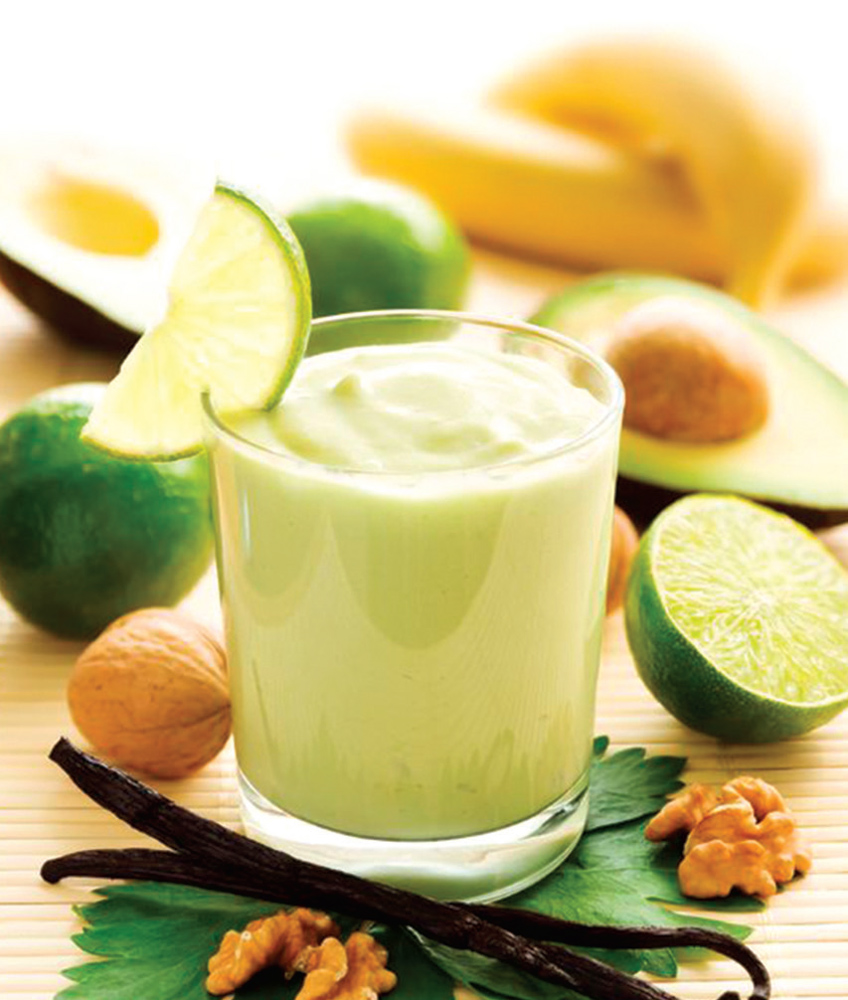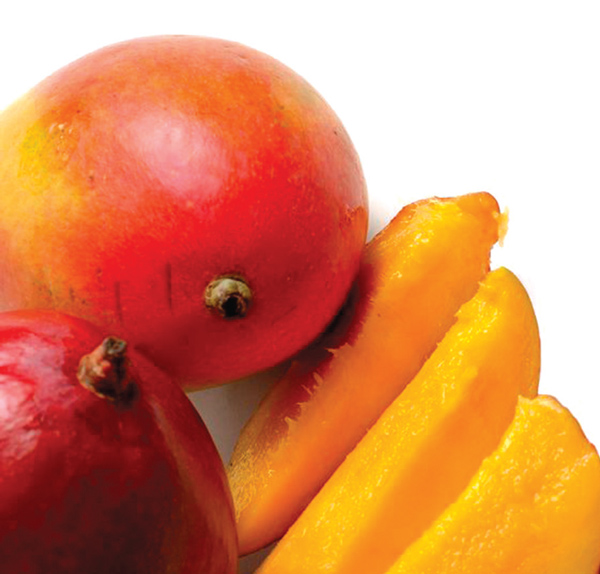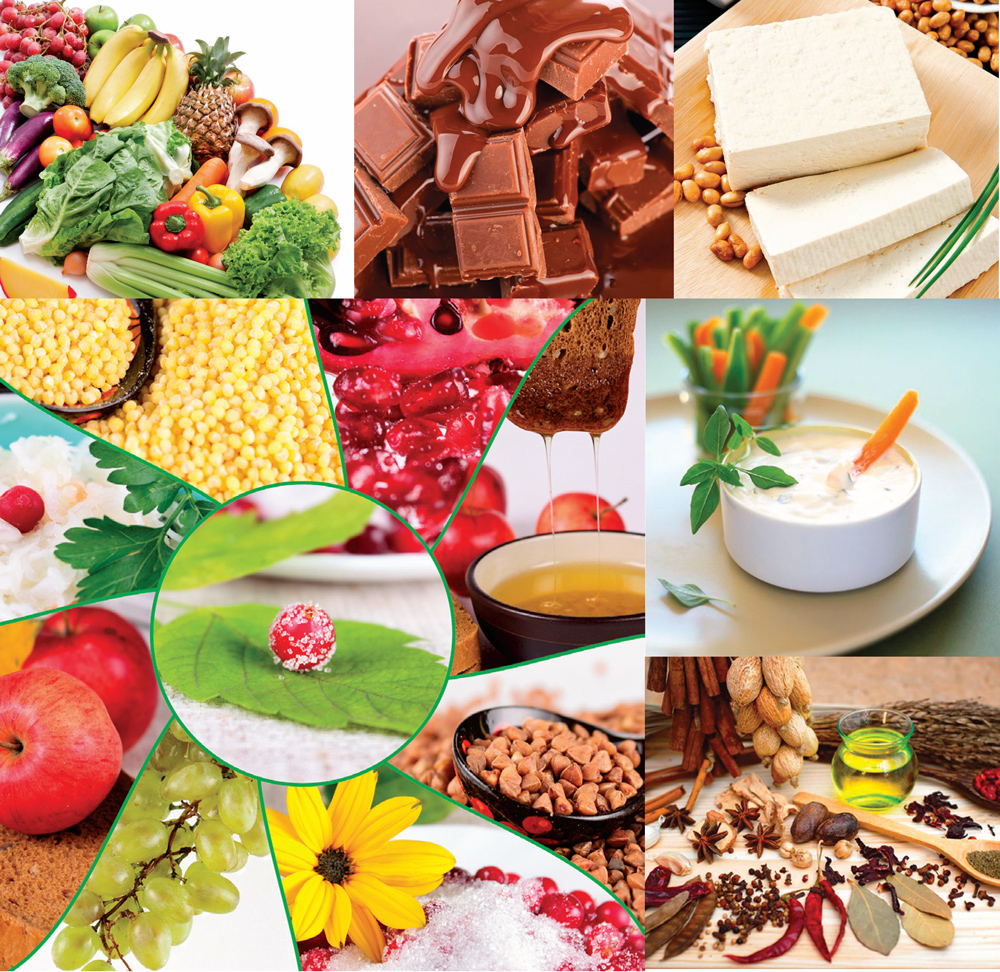In his book, Who Got Einstein’s Office?, author Edward Regis recounts an incident that took place one afternoon when Albert Einstein was walking alone near his house in Princeton, New Jersey. The renowned physicist encountered a younger colleague, and after talking for a few minutes, the two men prepared to go their separate ways. Just then, Einstein hesitated and asked, “Excuse me, when we stopped to talk, was I walking towards my house or away from it?”
While many people might have been surprised by such a question, those who worked with Einstein had learned to expect anything. The colleague replied, “You were walking away from your house, I’m sure of it.”
Einstein smiled and said, “Excellent! That means I’ve already eaten my lunch.”
It is possible that Einstein wasn’t very interested in food, but if he weren’t able to eat for a few days, you can be sure that his absorption in his scientific contemplation would have quickly shifted to the best way to get a peanut butter sandwich.
No one is really indifferent to eating. We’re all “addicted” to it, but nature intends for this to be a positive addiction that nourishes our health and well-being. Unfortunately, modern Western society, which has eliminated the problem of hunger more successfully than any previous culture, is now experiencing unprecedented rates of people who are obese or overweight or who suffer from various forms of unhealthy eating. The health consequences of carrying excess weight have been well publicized in the media, including increased risk of coronary heart disease and type 2 diabetes; certain forms of cancer (endometrial, breast, and colon), stroke and osteoarthritis.
For many people who are seriously overweight or just need to lose a few pounds, the most challenging problem is dealing with food cravings or compulsive eating. The healing system of Ayurveda offers profound insight and practical solutions to these problems. For the ancient vedic sages who created Ayurveda, the act of eating and the choice of what to eat were profoundly important. The principles they arrived at have been refined through the centuries and are notable both for their good common sense and their congruence with current research on nutrition, weight management, and eating disorders. Quite simply, they work.
The following information and techniques can help you transform your relationship with your body, emotions, and food as you let go of compulsive eating habits and food cravings.
As you put these tools into practice, the single most important suggestion we can offer is to be patient with yourself. It’s extremely damaging to criticize yourself each time you perceive that you’ve eaten in an unhealthy or non-nurturing way. If you find yourself overeating, remember that your action arose from a desire to make yourself feel better. Since eating generates endorphins and fosters a temporary sense of well-being or comfort, many people often cover up their emotional pain with food. They then berate themselves for not being “disciplined” enough to control their eating, which leads to further emotional pain and more overeating . . . and so the cycle continues until you bring awareness to what is happening. As you follow the guidelines below, you’ll find that your food cravings and non-nurturing eating patterns will gradually drop away as you become fulfilled in body, mind, and spirit.
Eat to balance your mind-body type
Ayurveda teaches that all health- related measures – whether an exercise program, dietary plan or herbal supplement – must be based on an understanding of an individual’s mind-body type, known as dosha. Your dosha reflects your innate tendencies, including your temperament, metabolism, energy level, learning style, and many other aspects of your body, mind, and emotions. once you identify your dosha, you can nurture your inherent well-being by making choices to balance your own mind-body type.
The three primary dosha types are Vata, Pitta and Kapha. These doshas express themselves through eating in characteristic ways. however, if you are overweight or coping with addictive eating behaviors, there is usually an underlying vata imbalance. once you’ve identified your dosha and any imbalances, you can begin to choose foods that will restore your innate balance. Before we go into detail on the specific recommendations for balancing each dosha, let’s first explore the key Ayurvedic concept of the six tastes, which plays a vital role in balancing all of the doshas.
The importance of taste
Ayurveda places a great emphasis on the sensations and pleasures of eating nutritious food and a balanced diet. From the Ayurvedic perspective, a balanced diet isn’t just about getting the right amounts of proteins, fats, carbohydrates, and vitamins – it is also about another extremely important quality: taste.
Ayurveda recognizes six tastes: sweet, sour, salty, bitter, pungent, and astringent. Including all six tastes in every meal not only ensures that all major food groups and nutrients are represented, but it also provides us with the feeling of satisfaction in eating. When we finish a meal feeling satisfied, we are much less likely to find ourselves raiding the cupboards or refrigerator two hours later.
How it works
The human brain sends hunger signals when it becomes aware of the need for energy and information. As we eat, our taste buds send messages to the brain informing it if we have ingested foods that provide the energy and information we need. The six tastes are the codes that inform our nervous systems of a meal’s nutritional content. If we sample foods that correspond to each of these tastes throughout the day, our meals will provide a wide assortment of health- promoting nutrients. If we do not have all flavors available, the brain is not satisfied and continues to send signals to eat more. As a result, we take in too many calories but remain malnourished.
Here are examples of foods containing each of the six tastes:
Sweet – whole grains, starchy vegetables, dairy, meat, chicken, fish, sugar, honey, molasses.
Sour – citrus fruits, berries, plums, tomatoes, pickled foods, vinegar, alcohol, cheese, and yogurt.
Salty – Soy sauce, seaweed, salted meats, fish, and any food to which table salt has been added.
Bitter – Bitter greens, endive, chicory, spinach, kale, romaine lettuce, leafy greens, celery, broccoli, sprouts, beets, tonic water.
Pungent – peppers, chilies, onions, garlic, cayenne, black pepper, cloves, ginger, mustard, salsa.
Astringent – lentils, dried beans, green apples, grape skins, cauliflower, figs, pomegranates, tea.
In every category of taste, some foods are highly nutritious and others should be eaten more sparingly. Favor fresh fruits and vegetables, whole grains, cereals, breads, and nuts. If you do not want to become vegetarian, reduce your intake of red meats, favoring cold-water fish and lean poultry cuts. Minimize your intake of highly refined sugar and wheat products.
In order to include all six tastes in your meals, you may need to experiment with different food and new spices. The recipes included in this article include a variety of tastes to inspire you. If you find it difficult to include all six tastes in a particular meal, at least experience each of them at some point during the day. once you get started, you’ll find it easier and easier to incorporate all six tastes.
Help for the sweet tooth
Of all these tastes, sweet taste is the one people most frequently crave. This may be because sweetness has the most settling effect on the mind-body physiology. It also increases the kapha dosha more than any other taste. If you crave sweets, make sure that your diet is thoroughly balanced and that you include all six tastes prepared in a fresh, nutritious, and delicious way. one food that Ayurveda specifically recommends to stop sugar cravings is milk. Milk contains the sweet taste and has a settling effect on the entire physiology. If you constantly hanker for sweets, try drinking a cup of warm milk each day, perhaps as part of your breakfast.
You can also use honey to reduce cravings for sweets. honey is the only sweetener that actually reduces the kapha dosha. Try drinking a cup of warm water with a teaspoon of honey and a squirt of lemon every day.
Dosha-balancing guidelines
Once you have identified your dosha type and understood the six tastes, you can begin to tailor your food choices for your own mind-body type. According to Ayurveda, it is important to eat foods that have a balancing effect upon the dominant dosha or that will pacify (stabilize) a dosha that has become excessive or aggravated.
 Recommendations for Vata
Recommendations for Vata
- The best tastes to pacify vata are sweet, salty and sour.
- Minimize foods that are pungent, bitter, or astringent since these tastes increase vata.
- To counterbalance the light, dry, cool nature of the vata dosha, Ayurveda traditionally recommends foods that are heavy, oily, or warm. If you want to lose weight, however, minimize foods that are high in sugar or fat and focus instead on natural grains, and heavy, moist fruits and vegetables. For example, you can enjoy whole-grain muffins made with vegetable purée in place of oil or butter.
- Cook your food for easy digestion.
- All low-fat dairy products are recommended. Milk is easier to digest when warm or heated.
- Rice and wheat are the best grains for balancing vata. Reduce the amount of barley, corn, millet, buckwheat and rye.
- Eat fewer dry or light fruits (such as apples, cranberries, pears and pomegranates), favoring instead sweet, heavy fruits such as bananas, avocados, mangoes, apricots, plums, berries, melons, papaya, peaches and nectarines. To ease digestion, fruits are best eaten lightly cooked or sautéed or eaten alone.
- Cooked vegetables are best. Raw vegetables should be minimized. Favor asparagus, beets and carrots. other vegetables may be taken in moderation if cooked in ghee (clarified butter) or extra virgin olive oil, including peas, broccoli, cauliflower, zucchini and sweet potatoes.
- Sprouts and cabbage tend to produce gas and should be minimized.
- Spices that pacify vata include cardamom, cumin, ginger, cinnamon, salt, cloves, mustard seed, basil, asafetida, cilantro, fennel, oregano, sage, tarragon, thyme and black pepper.
- All varieties of nuts are recommended, in moderation.
- Beans can aggravate vata, so minimize your consumption of them, with the exception of tofu and mung bean dal.
- For non-vegetarians, use fresh, organic chicken, turkey, seafood and eggs.
 Recommendations for Pitta
Recommendations for Pitta
- The best foods to pacify Pitta are those with sweet, bitter, or astringent tastes.
- Foods that are pungent, salty, or sour aggravate Pitta and should be minimized
- Since an excess of Pitta dosha overheats the mind and body, favor cool foods and liquids
- All sweeteners may be taken in moderation except molasses and honey
- olive, sunflower and coconut oils are the best oils to pacify Pitta. Use less sesame, almond, and corn oil, which are more heating. Wheat, rice, barley and oats are the best grains to reduce Pitta. Eat less corn, rye, millet and brown rice.
- Dairy can be helpful in balancing the heat of Pitta, take milk, however, since the sour taste can increase the Pitta dosha, fermented products such as yogurt, sour cream and cheese should be used sparingly. Ghee (clarified butter) is recommended.
- The sweeter fruits such as grapes, melons, cherries, coconuts, avocados, mangoes, pomegranates, fully ripe pineapples, oranges and plums are recommended. Reduce sour fruits such as grapefruits, apricots and berries.
- The vegetables to favor are asparagus, cucumbers, potatoes, sweet potatoes, green leafy vegetables, pumpkins, broccoli, cauliflower, celery, okra, lettuce, green beans and zucchini. Reduce tomatoes, hot peppers, carrots, beets, eggplant, onions, garlic, radishes and spinach.
- Pitta types need to use seasonings that are soothing and cooling. These include cilantro, cardamom, saffron and fennel. hotter spices such as ginger, cumin, black pepper, fenugreek, clove, salt and mustard seeds should be used sparingly. very hot seasonings such as chili peppers and cayenne are best avoided. Chew on fennel seeds after meals to cool down acid in the stomach.
- For non-vegetarians, chicken, pheasant and turkey are preferable; beef, seafood, and eggs increase Pitta and should be minimized.

Recommendations for Kapha
- Foods with pungent, bitter, and astringent tastes are most beneficial for pacifying kapha.
- Reduce foods with sweet, sour, and salty tastes as these can increase kapha.
- Since kapha is heavy, oily and cold, favor foods that are light, dry, or warm.
- Reduce your intake of dairy, which tends to increase kapha. You can use small amounts of ghee, low-fat milk and low-fat yogurt.
- Honey is the only sweetener that balances kapha. other sweeteners should be avoided because they increase the kapha dosha, contributing to problems such as blocked sinuses, allergies, colds, lethargy and weight gain.
- Drinking hot ginger tea with meals helps stimulate slow digestion and sharpen dull taste buds. Drink 2 to 3 cups of ginger tea daily.
- All beans are good for kapha types except for soybeans and soybean-based foods such as tofu, which should be eaten in moderation.
- Favor lighter fruits such as apples, pears, pomegranates, cranberries and apricots. Reduce heavier fruits like bananas, avocados, pineapples, oranges, peaches, coconuts, melons, dates and figs.
- In general, all vegetables are recommended but reduce consumption of sweet and juicy vegetables such as sweet potatoes, tomatoes and zucchini.
- All spices except salt are pacifying to kapha. Use pungent spices like pepper, cayenne, mustard seeds and ginger freely in your diet.
- Reduce intake of all nuts and seeds. Favor pumpkin seeds and sunflower seeds. A kapha diet should be lively and full of energy to help spark the digestive and metabolic systems. Eat your largest meal at lunchtime and a smaller meal at dinnertime. Allow at least three hours to digest before bedtime.
- Try a liquid fast one day per week, ingesting only fresh vegetables and fruit juices, and pureed vegetable soup.
- Fats and oils: Use small amounts of extra virgin olive oil, ghee, almond oil, corn oil, sunflower oil, mustard oil, or safflower oil.
- Favor barley, corn, millet, buckwheat, rye. Reduce intake of oats, rice and wheat.
- For non-vegetarians, fresh, organic white meat chicken, turkey, eggs and seafood are acceptable. Limit consumption of red meat
Mind-body tools for conscious eating:
In addition to eating a dosha- balancing diet and including the six tastes in every meal, there are many other practices and tools we can use to increase our enjoyment of food, stop cravings, and arrive at our own ideal weight and balance.
Breathing awareness meditation
- Reserve some quiet time alone. Begin by sitting quietly, holding your hands lightly at your sides or in your lap. Close your eyes.
- Start to breathe lightly and easily, letting your attention follow your breathing. Feel the breath flowing down into your lungs. There’s no need to inhale deeply or hold your breath; just breathe normally, with awareness.
- When you exhale, let your attention follow the air up out of your lungs and softly through the nostrils.
- Let your breath move gently and easily, with your attention following. Then make your breathing a little lighter. Don’t force any of this
- Thoughts and images will continue to appear and swirl through your mind. Don’t pay attention to them; just patiently keep coming back to your breath.
- Continue this relaxed breathing for about five minutes, with your eyes closed and your mind focused on the easy, natural flow of your breath
Choose joy over rigidity
Although we can create a lot of drama around eating, let it be easy and joyful. our recommendation is to use fresh and freshly prepared food whenever possible. If you can’t always find the ideal source of fresh food, don’t agonize over it. keep in mind that how you eat is as important as what you eat. The attention that you bring to the act of preparing, eating, and digesting a meal enlivens the intelligence of food in your physiology. If you prepare and eat a meal with joy and love, you will come away with a fuller heart and a more lively spirit. on the other hand, if you eat when you’re upset or wolf down a sandwich on the run, your digestion will be disturbed.
Body intelligence techniques
- Create a quiet, comfortable atmosphere for your meals.
- Eat only when you’re hungry.
- Don’t eat when you are upset. Wait until you’ve calmed down.
- Avoid ice-cold food and beverages, which weaken the body’s digestive powers.
- Sip warm water with your meals to avoid diluting digestive acids.
- Leave one-third to one-quarter of your stomach empty to allow space for your body to digest the scrumptious, nourishing fuel you have eaten. Also, if you leave a little room in your stomach, you will feel more energetic and buoyant.
- Give yourself permission to savor your food. Turn off the Tv, phone, and other distractions. Simply slowing down and focusing on the appearance, aroma, and flavor of your food is extremely beneficial.
- Sit quietly for a few minutes after your meal. Focus your attention on the sensations in your body, and then take a short walk.
Delicious recipes
We hope that you will enjoy preparing and sharing delicious meals that will enliven your body’s inherent balance and vitality.
Tofu Scramble
Prepared with fresh vegetables, fragrant herbs and tofu, this recipe is delicious and satisfying at any time of day. To make a breakfast burrito to go, add a little cheese and salsa to the tofu mixture and wrap inside a warm flour tortilla.
Serves 4
Ingredients
16 ounces fresh low-fat tofu, firm or extra firm, drained and crumbled
1 teaspoon ghee
½ cup chopped leeks or onions
1 tablespoon Bragg Liquid Aminos or tamari
1 pinch black pepper
1 teaspoon cumin
1 teaspoon curry powder
½ teaspoon coriander powder
½ teaspoon dill ¼ teaspoon nutmeg
½ cup diced tomatoes
½ cup diced zucchini
1 cup fresh spinach Vegetable stock
¼ cup chopped cilantro
Place the crumbled tofu into a bowl and set aside. heat a large sauté pan over medium heat and add the ghee, leeks, Aminos and spices. Sauté for 2 minutes.
Add the tomatoes, zucchini, and spinach and continue to sauté until the vegetables begin to soften (approximately 5 minutes). Add some vegetable stock if the mixture becomes dry. Add the crumbled tofu and stir until well combined. Continue to sauté until the tofu is heated through. Garnish with the chopped cilantro.

Goddess Greens with Gorgonzola
This delicious salad will nurture your love for sensory pleasures of the palette. The sweet, crunchy flavor of honey-glazed walnuts are a good contrast with the pungent Gorgonzola and fresh spinach. Enjoy as an appetizer or light entrée.
Serves 4 to 6
Ingredients
2 pounds fresh spinach, washed and stemmed
1 cup honey-glazed walnuts (see instructions below)
½ cup crumbled Gorgonzola cheese
½ cup currants
3 tablespoons poppy seed dressing (see recipe below)
Toss all ingredients together and arrange on chilled plates.
Honey-Glazed Walnuts
Ingredients
½ teaspoon ghee
1 cup walnut pieces
1 tablespoon honey
Heat the ghee to the smoking point in a skillet. Toss in the walnuts and sauté for 2 minutes, until golden. Add the honey and coat the walnuts well. Let cool completely before using.
Poppy Seed Dressing
Makes about ¾ cup
Ingredients
1 tablespoon Dijon mustard
1 tablespoon olive oil
1 tablespoon honey
1 tablespoon Bragg Liquid Aminos or tamari sauce
1 tablespoon lemon juice
½ cup orange juice
¼ cup plain yogurt (low-fat or nonfat)
1 tablespoon poppy seeds
Combine all the ingredients in a small jar and shake well. The dressing can be stored in the refrigerator for several days.
Vegetable White Bean Chili
Warm, spicy chili is especially good during the cold winter months. You can make it in a slow cooker and come home to a nurturing meal. This recipe calls for Great northern beans, which are large white beans with a distinctive delicate flavor. If these aren’t available where you live, substituting another kind of white bean will also be delicious.
Serves 4
Ingredients
1 cup Great Northern beans, rinsed and soaked overnight in water
4 to 6 cups vegetable stock
1 teaspoon ghee or olive oil
1 cup leeks or onions, chopped
2 tablespoons diced mild chilies, canned or freshly roasted
2 cloves garlic, minced
1 tablespoon chili powder
1 teaspoon cumin
1 teaspoon coriander
2 medium carrots, cut into 1-inch pieces
1 cup chopped tomatoes
1 cup zucchini, cut into ¼-inch slices
1 cup washed fresh spinach
1 cup corn, fresh or frozen
2 green onions, chopped
¼ cup chopped cilantro
Drain the soaked beans and place in a soup pot with the vegetable stock. Bring to a boil, then reduce the heat and simmer at a low rolling boil until the beans are tender. heat the oil in a sauté pan over medium heat. Add the leeks, chilies, garlic, chili powder, cumin, and coriander. Sauté for 3 minutes, then add the carrots and tomatoes.
Simmer the stew for 5 to 7 minutes or until the carrots are tender. Add the zucchini during the last 2 minutes. Add the vegetable mixture in the sauté pan to the cooking beans when the beans are almost tender. Stir in the spinach and corn. Continue to simmer for another 5 minutes. Garnish with the green onions and chopped cilantro.
Unbelievable Double Chocolate Cake
Applesauce, ghee and tofu give this chocolate cake a rich, moist texture without the many grams of saturated fat contained in traditional recipes. It is an excellent dessert for celebrations with loved ones.
Serves 12
Ingredients
1 cup whole wheat pastry flour
¾ cup cocoa powder, unsweetened
2 teaspoons baking powder
1 teaspoon baking soda
¼ cup ghee or canola oil
¾ cup applesauce
1 cup maple syrup
12 oz. low-fat silken tofu, firm or extra firm (crumble and drain for 20 minutes) 2 teaspoons vanilla extract
1 cup chocolate chips
Preheat oven to 350 degrees (F). oil an 8-inch round pan (or a 9-by-13inch pan) and set aside. In a food processor or blender, purée the tofu, oil, maple syrup, applesauce, and vanilla until smooth. Set aside.
In a large bowl, sift together the flour, cocoa, baking powder, and baking soda. Pour the wet ingredients into the dry ingredients and combine. Gently fold in the chocolate chips, being careful not to over mix.
Pour the batter into the prepared baking pan and bake for 30 to 40 minutes or until an inserted toothpick comes out clean. once the cake cools, decorate with chocolate icing (see recipe below).
Chocolate Icing
Ingredients
1 cup butter
4 cups chocolate chips
1 package (12 oz.) silken tofu
¼ cup maple syrup
Melt the chocolate chips and butter in a sauce pan and stir until smooth.
Next, blend the tofu and maple syrup in a food processor or mixer. Add the melted chocolate chips and butter. Allow the icing to cool to room temperature before frosting the cake.
 Deepak Chopra, MD, FACP, founder of The Chopra Foundation, a non-profit entity for research on well-being and humanitarianism, and Chopra Global, a modern-day health company at the intersection of science and spirituality, is a world-renowned pioneer in integrative medicine and personal transformation. Chopra is a Clinical Professor of Family Medicine and Public Health at the University of California, San Diego and serves as a senior scientist with the Gallup Organization. www.chopra.com
Deepak Chopra, MD, FACP, founder of The Chopra Foundation, a non-profit entity for research on well-being and humanitarianism, and Chopra Global, a modern-day health company at the intersection of science and spirituality, is a world-renowned pioneer in integrative medicine and personal transformation. Chopra is a Clinical Professor of Family Medicine and Public Health at the University of California, San Diego and serves as a senior scientist with the Gallup Organization. www.chopra.com
 David Simon, MD, was an author, physician, and co-founder of The Chopra Center for Wellbeing, California. Since his association with Deepak Chopra in the 1980’s, Dr. Simon became one of the foremost authorities in effective and appropriate fusion of western and eastern healthcare practices. He was dedicated to evolving the prevailing health care system to a “healing system.”
David Simon, MD, was an author, physician, and co-founder of The Chopra Center for Wellbeing, California. Since his association with Deepak Chopra in the 1980’s, Dr. Simon became one of the foremost authorities in effective and appropriate fusion of western and eastern healthcare practices. He was dedicated to evolving the prevailing health care system to a “healing system.”







